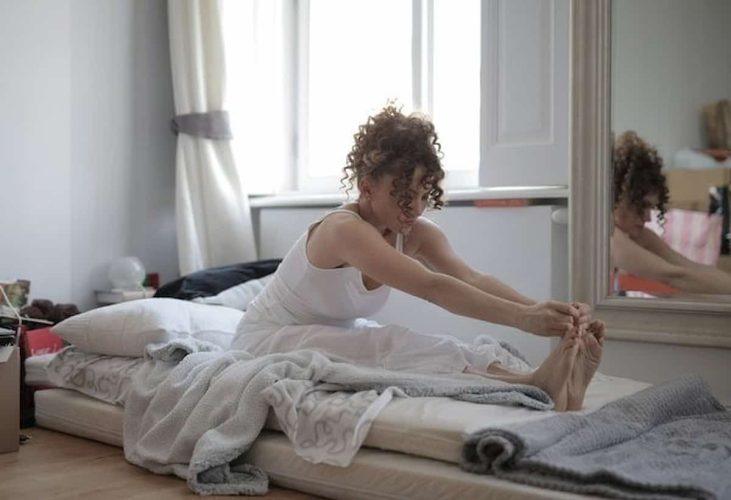Lower back pain is very common. It can result from a strain (injury) to muscles or tendons in the back. The causes of lower back pain can be many and complex, but there are several things you can do to relieve it and prevent it from getting worse.
Any movement recommended by experts is about relieving pressure, reducing tension, protecting the spine, and strengthening muscles.
Here are seven practical ways to relieve the tension in your lower back area:
1. Put a pillow under the knees
If you are lying on your back, then in order to avoid additional pressure on the lower back, you should have your legs slightly elevated. This is achieved by placing a pillow under the knees, reducing pressure on the lower back by 50%. If you want to elevate your legs and align your spine, try placing a pillow under both your knees. This position can also help reduce back pain by aligning your spine and reducing tension in the lower half of your body.
2. Strengthen your core
Exercises that focus on strengthening the trunk—the abdomen and back—also reduce the risk of injuries (muscle spasms, pulls) to the spine. For a stronger and more flexible torso, incorporate these types of exercises twice a week into your workouts. Building abdominal strength is about so much more than physical appearance: It can help you go about everyday tasks with more ease and improve your overall wellbeing.
3. Change shoes
To avoid lower back pain, wear comfortable low-heeled shoes (the heel should not exceed 2.5 cm), especially when standing for a long time. When you try on shoes, spend some time walking around in them and paying attention to how they feel. No matter how good they look, don’t buy shoes that are too tight, too loose, unsupportive, or in any way uncomfortable.
4. Straighten your back
Poor posture is a common cause of back and neck pain. Slouching or maintaining a curved spine places undue stress on the spine, the back’s supporting muscles, and the internal organs. Correcting poor posture begins with awareness and making an effort to sit, stand, walk, and sleep with good posture. The goal is to make good posture a regular habit. Don’t hunch your shoulders. Whether you are sitting or standing, make sure your back is straight. Otherwise, the spine is loaded, especially the waist. If necessary, put a pillow on the chair to align the spine.
5. Do not smoke
Smokers are more likely to experience back pain than non-smokers. A possible explanation is that nicotine reduces the perfusion of the intervertebral discs, favoring their “drying” or even their rupture. Smoking also reduces the oxygenation of the blood and, therefore, the nutrition of muscles and tendons, increasing the vulnerability of the back.
6. Divide weights
Avoid carrying heavy objects, and if you cannot avoid it, make sure to divide the weight between your hands or shoulders. Ideally, prefer the supermarket trolley to carry your shopping. If you have bags, divide them between your hands. Also, when carrying heavy objects, keep them close to your torso and keep your knees slightly bent.
7. Do some stretching
Research shows that doing a combination of strength and aerobic exercises and stretching two to three times a week can help prevent and ease lower back pain. Don’t miss an opportunity to stretch, e.g., when you wake up in the morning after long hours of sitting or standing in a certain position. Stretching improves blood circulation in the spine and relieves minor discomfort due to a lack of movement. The nice thing about gentle stretching is that it’s feasible to do when you’re in pain and often provides the fastest relief.
And for some extra support, don’t forget Doctor Hoy’s natural pain relief gel that will relieve sore muscles from inflammation naturally.

